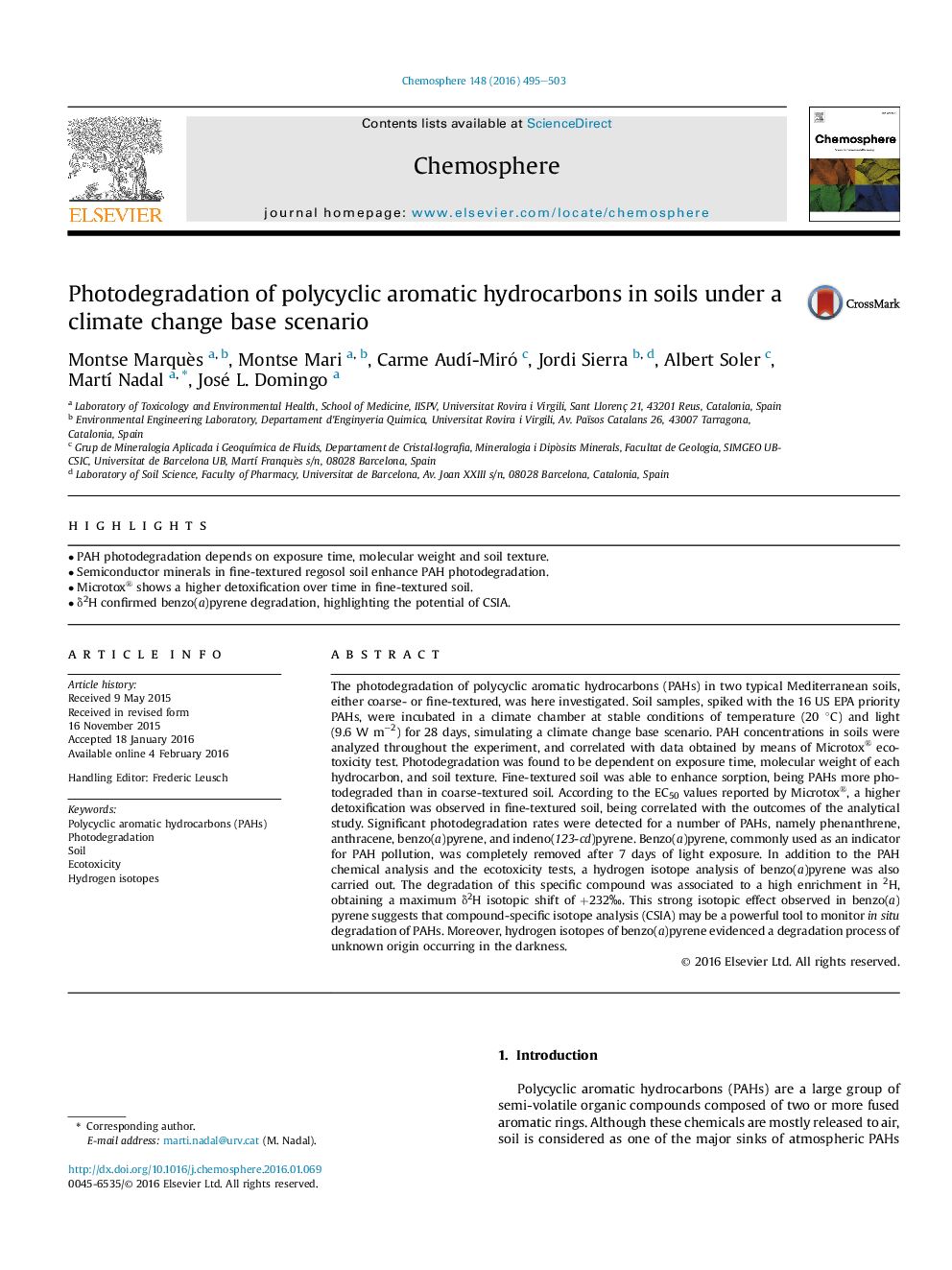| کد مقاله | کد نشریه | سال انتشار | مقاله انگلیسی | نسخه تمام متن |
|---|---|---|---|---|
| 4407851 | 1618823 | 2016 | 9 صفحه PDF | دانلود رایگان |
• PAH photodegradation depends on exposure time, molecular weight and soil texture.
• Semiconductor minerals in fine-textured regosol soil enhance PAH photodegradation.
• Microtox® shows a higher detoxification over time in fine-textured soil.
• δ2H confirmed benzo(a)pyrene degradation, highlighting the potential of CSIA.
The photodegradation of polycyclic aromatic hydrocarbons (PAHs) in two typical Mediterranean soils, either coarse- or fine-textured, was here investigated. Soil samples, spiked with the 16 US EPA priority PAHs, were incubated in a climate chamber at stable conditions of temperature (20 °C) and light (9.6 W m−2) for 28 days, simulating a climate change base scenario. PAH concentrations in soils were analyzed throughout the experiment, and correlated with data obtained by means of Microtox® ecotoxicity test. Photodegradation was found to be dependent on exposure time, molecular weight of each hydrocarbon, and soil texture. Fine-textured soil was able to enhance sorption, being PAHs more photodegraded than in coarse-textured soil. According to the EC50 values reported by Microtox®, a higher detoxification was observed in fine-textured soil, being correlated with the outcomes of the analytical study. Significant photodegradation rates were detected for a number of PAHs, namely phenanthrene, anthracene, benzo(a)pyrene, and indeno(123-cd)pyrene. Benzo(a)pyrene, commonly used as an indicator for PAH pollution, was completely removed after 7 days of light exposure. In addition to the PAH chemical analysis and the ecotoxicity tests, a hydrogen isotope analysis of benzo(a)pyrene was also carried out. The degradation of this specific compound was associated to a high enrichment in 2H, obtaining a maximum δ2H isotopic shift of +232‰. This strong isotopic effect observed in benzo(a)pyrene suggests that compound-specific isotope analysis (CSIA) may be a powerful tool to monitor in situ degradation of PAHs. Moreover, hydrogen isotopes of benzo(a)pyrene evidenced a degradation process of unknown origin occurring in the darkness.
Journal: Chemosphere - Volume 148, April 2016, Pages 495–503
